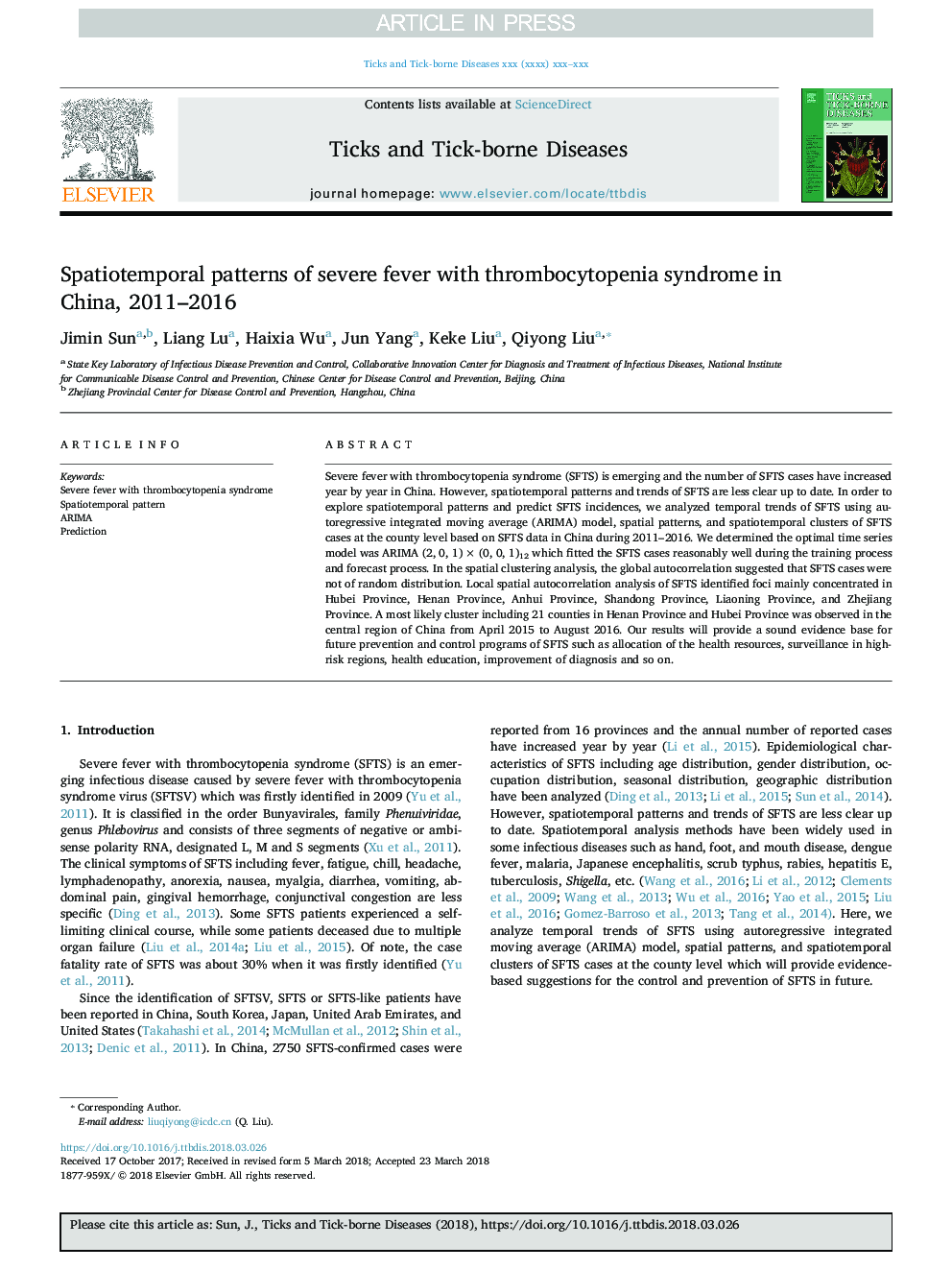| Article ID | Journal | Published Year | Pages | File Type |
|---|---|---|---|---|
| 8507261 | Ticks and Tick-borne Diseases | 2018 | 7 Pages |
Abstract
Severe fever with thrombocytopenia syndrome (SFTS) is emerging and the number of SFTS cases have increased year by year in China. However, spatiotemporal patterns and trends of SFTS are less clear up to date. In order to explore spatiotemporal patterns and predict SFTS incidences, we analyzed temporal trends of SFTS using autoregressive integrated moving average (ARIMA) model, spatial patterns, and spatiotemporal clusters of SFTS cases at the county level based on SFTS data in China during 2011-2016. We determined the optimal time series model was ARIMA (2, 0, 1)â¯Ãâ¯(0, 0, 1)12 which fitted the SFTS cases reasonably well during the training process and forecast process. In the spatial clustering analysis, the global autocorrelation suggested that SFTS cases were not of random distribution. Local spatial autocorrelation analysis of SFTS identified foci mainly concentrated in Hubei Province, Henan Province, Anhui Province, Shandong Province, Liaoning Province, and Zhejiang Province. A most likely cluster including 21 counties in Henan Province and Hubei Province was observed in the central region of China from April 2015 to August 2016. Our results will provide a sound evidence base for future prevention and control programs of SFTS such as allocation of the health resources, surveillance in high-risk regions, health education, improvement of diagnosis and so on.
Related Topics
Life Sciences
Agricultural and Biological Sciences
Animal Science and Zoology
Authors
Jimin Sun, Liang Lu, Haixia Wu, Jun Yang, Keke Liu, Qiyong Liu,
